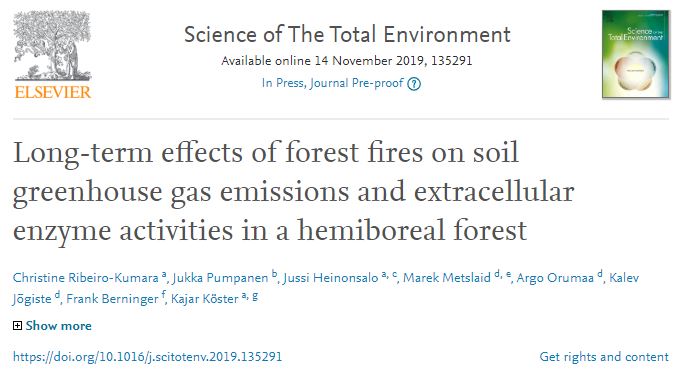
New paper by Ribeiro –Kumara et al. studied how fire-induced changes to soil properties and vegetation affect gas exchange of CO2, CH4 and N2O in the soil–atmosphere interface of hemiboreal Scots pine forests in Estonia.
The results showed a reduction of soil CO2 efflux at the beginning of the fire chronosequence, but no changes to CH4 or N2O fluxes related to time after fire. Soil respiration responded differently to changes in soil temperature and soil moisture across the fire chronosequence. Conversely, CH4 and N2O fluxes only responded to changes in soil temperature. Recovery of soil respiration in the long term was associated with the moderate effect of fire on enzyme activity, the above- and below-ground litter C input, and the re-establishment of overstorey vegetation. Enzyme activity and decomposition inside the litter bags were especially good indicators of the role of the microbiota on the initial recovery of soil respiration prior to the re-establishment of the vegetation
Despite its limitations, the study certainly adds to our understanding of the importance and complexity of both above- and below-ground (vegetation and microbiota) responses to fire-induced changes of soil physicochemical properties for determining the temporal variability of gas exchange.